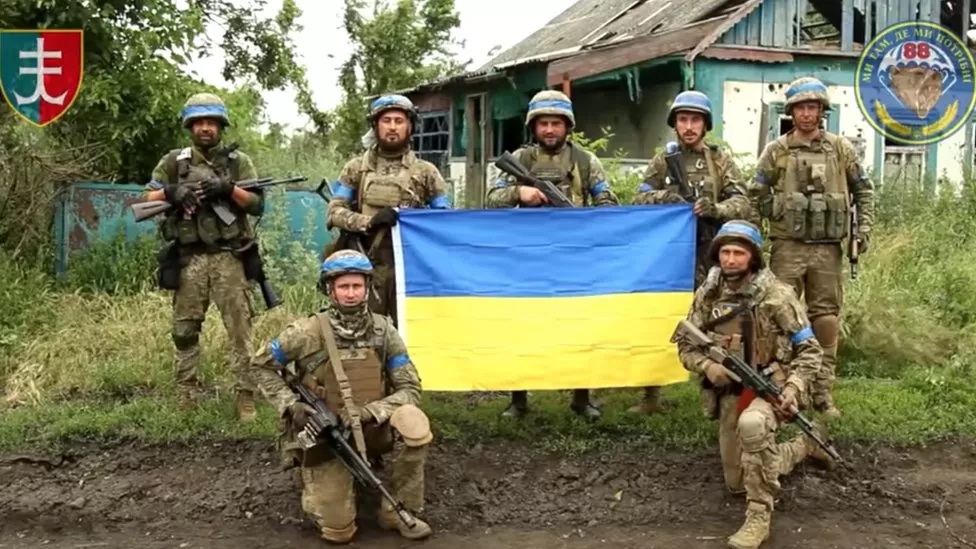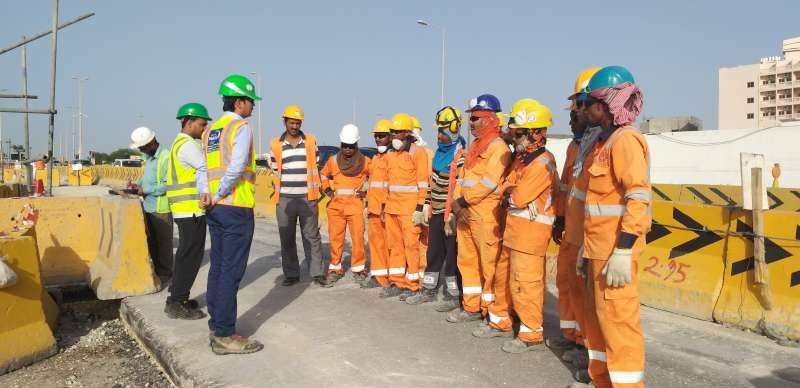“Don’t call it a counteroffensive,” the Ukrainians have said. The Russians will be driven from our territory because this is our attack.
Okay, but what should we expect in terms of absolute success?
Let’s not get sidetracked by Ukraine’s recent hard-won but minuscule territorial advances as it retakes forgotten, half-abandoned villages in the Donetsk and Zaporizhzhia provinces to the east and south, respectively.
Images of triumphant, bloodied Ukrainian troops waving their country’s blue and yellow flag in front of a bullet-ridden structure are a morale booster for Ukrainians after months of stalemate.
However, this is a minor tactical issue in the grand scheme.
The southern region of Russian-held territory, including the terrain between Zaporizhzhia and the Sea of Azov, is crucial to this assault.
The core portion of the purple-shaded strip on the image below, which has altered little since the initial weeks of the invasion last year, is the so-called “land corridor” that connects Russia to unlawfully acquired Crimea.
Splitting it in two and holding the territory retaken would be a significant victory for Ukraine’s operation.
It would make it difficult for Russia to resupply its army in Crimea and isolate its Western soldiers.
It would not mean the end of the war (which some now fear could last for years), but it would put Ukraine in a strong negotiating position when peace negotiations inevitably occur.
Ukrainian forces are depicted on this map as having retaken four villages in a disputed area west of Donetsk.
However, the Russians have examined the map and reached the same conclusion.
Meanwhile, Moscow built “the most formidable defensive fortifications in the world.” At the same time, Ukraine dispatched its men to NATO nations for training and prepared their 12 armored brigades for this summer’s war.
Russian minefields, concrete tank-blockers (known as “dragons’ teeth”), bunkers, gun positions, and trenches broad and deep enough to halt a Leopard 2 or M1 Abrams tank in their tracks obstruct Ukraine’s way to the shore – its coast, let’s not forget.
While the Ukrainian armored vehicles and their personnel wait for their engineers to find a way through, the artillery impact zones have been carefully adjusted to rain down high explosives on them.
It’s still early in the assault, but initial reports indicate that Russian defenses are firm.
Since Ukraine hasn’t fully committed its forces yet, they are mostly reconnaissance and intel operations to determine where Russia’s artillery is located and where the gaps in their defenses may be.
Ukraine’s morale is on its side. Its troops enthusiastically battle because they are defending their homeland from an enemy invader.
The vast majority of Russian soldiers lack this drive and often have weaker training, equipment, and leadership than the Ukrainians.
Suppose the General Staff in Kyiv can make a significant advance. In that case, they hope the resulting collapse in Russian morale will extend throughout the battlefront as demoralized Russian forces lose the will to fight.
The high standard of equipment supplied by NATO nations is also working in Ukraine’s favor. Tanks and infantry combat vehicles built by NATO are more resilient than their Soviet counterparts and can often survive direct hits, allowing their crews to continue the fight.
How effective will that be against Russia’s artillery and drones?
As a larger country, Russia has access to more resources than Ukraine. Having started this war, Russian President Vladimir Putin is well aware that if he can drag out the fighting with the Ukrainians into the new year, the United States and its allies may grow weary of funding the conflict and begin to apply pressure on Kyiv to end hostilities.
- Analysis of Ukraine’s counteroffensive
- Before a massive attack, satellite imagery reveals Russian defenses.
- Ukrainians often think back to Bakhmut, the city of salt and wine.
- Last but not least, there’s the issue of lack of air protection. Attacking a fortified enemy position is hazardous without adequate close air support.
This is why Ukraine has been begging the West to give it F16 fighter fighters for so long.
It wasn’t until late May that the United States, the country responsible for producing them, gave the go-ahead, well after Ukraine’s initial preliminary attack phase had begun.
Unfortunately for Ukraine, the game-changing F16s may not make it to the battlefield in time to play a significant role in the initial stages of this counteroffensive.
The Ukrainians are not necessarily doomed to fail.
They have repeatedly shown themselves to be quick on their feet and full of ideas. They could force the Russian army out of Kherson by attacking their supply depots in the vicinity, preventing the Russians from resupplying their men in the city of Kherson in the south.
Ukraine will now try to do the same, armed with long-range weaponry like Britain’s Storm Shadow cruise missile.
However, it may be many weeks or months before we have a clearer sense of who is likely to finally succeed in this conflict amidst all the claims and counter-claim of a propaganda war.




